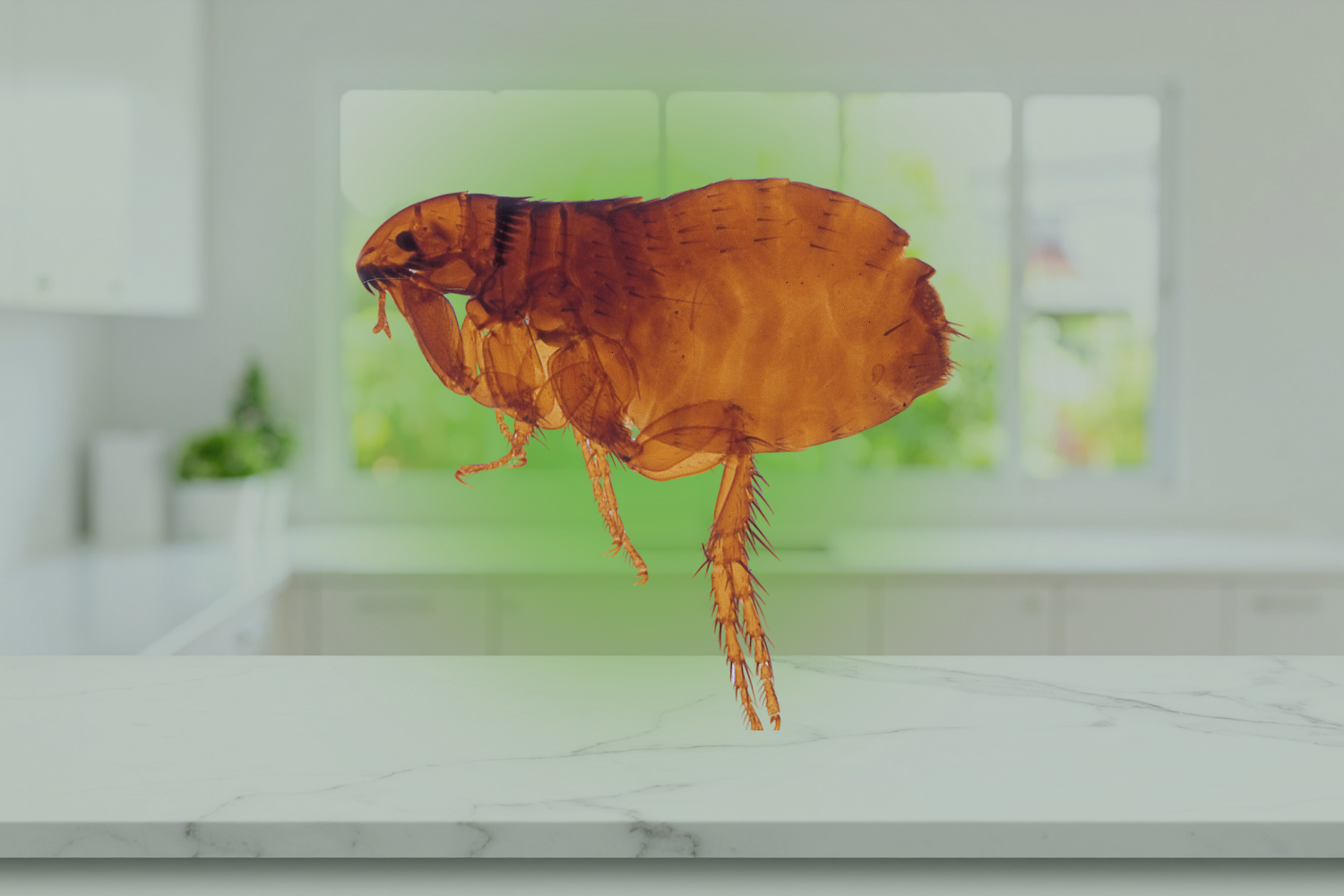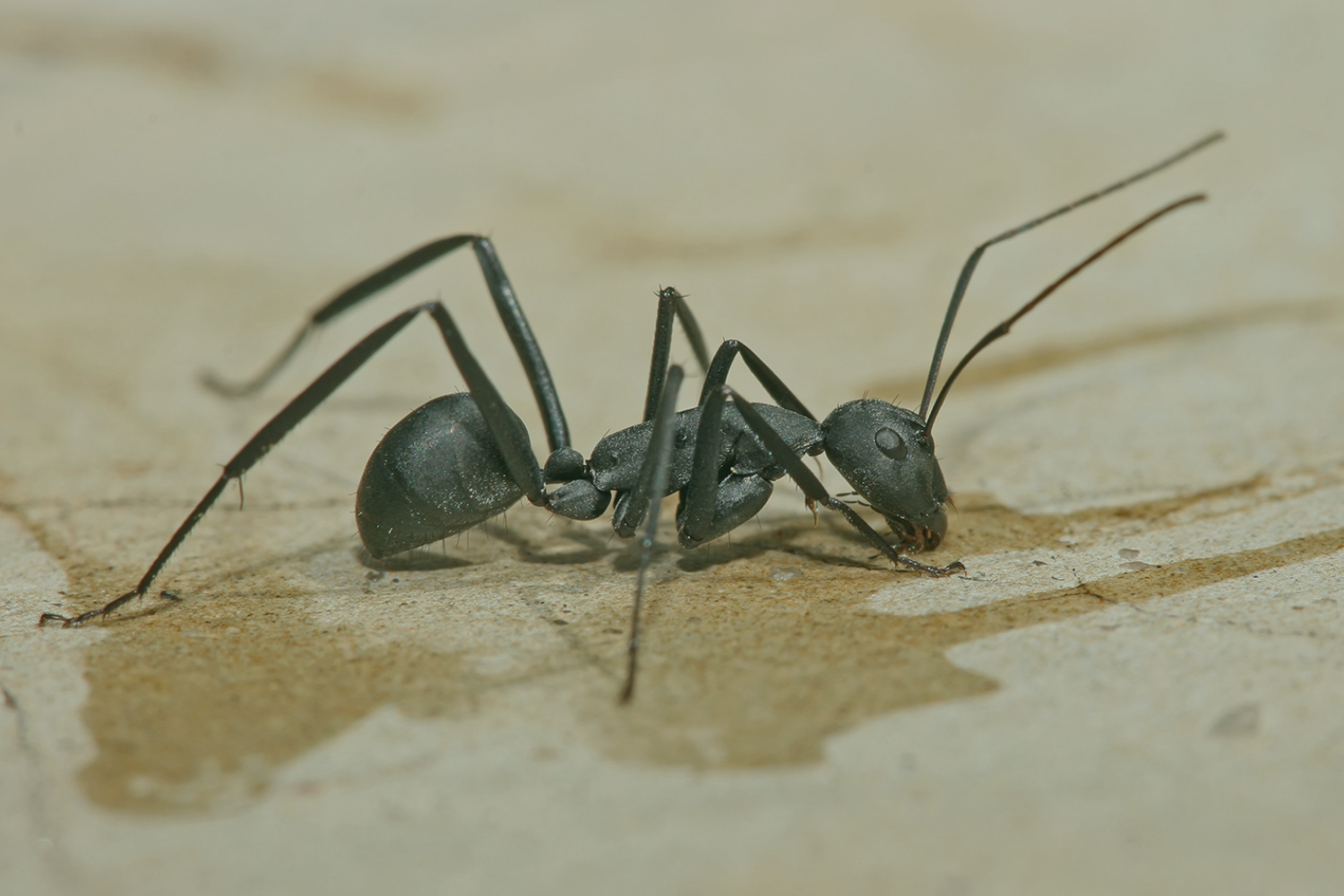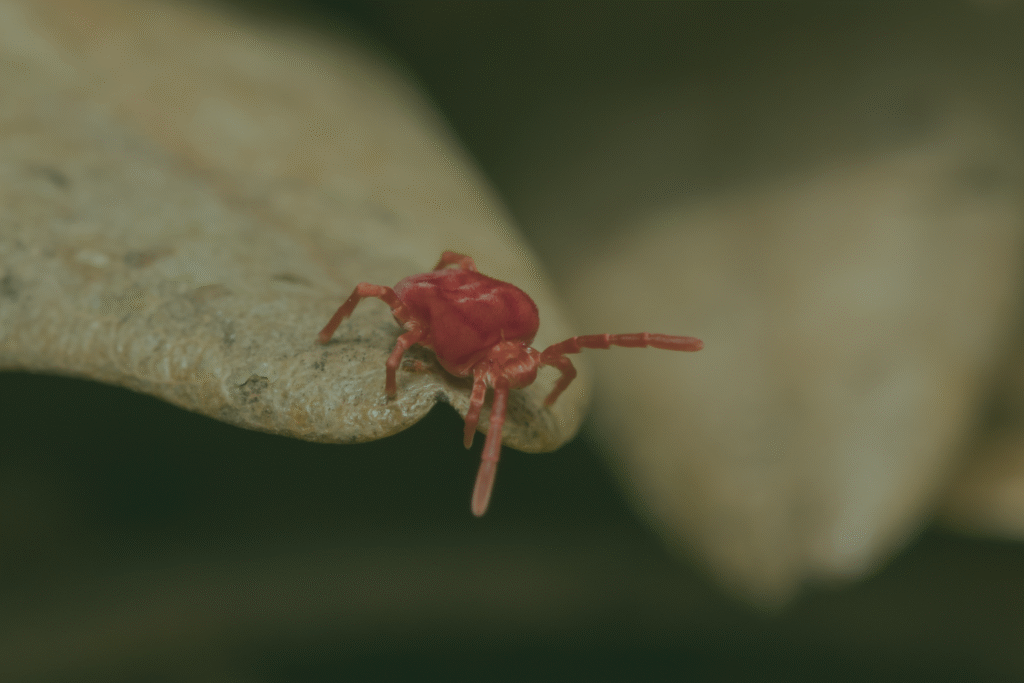
If you’ve noticed tiny red bugs crawling on your windowsills, walls, or siding, you’re not alone. These mini red spiders are not actually spiders at all.
Most of the time, homeowners see clover mites, a type of small mite that shows up in large numbers, especially in spring. While they aren’t dangerous, they can become a big nuisance when they sneak indoors.
This guide explains what mini red spiders really are, why they appear in homes, and how you can keep them under control.
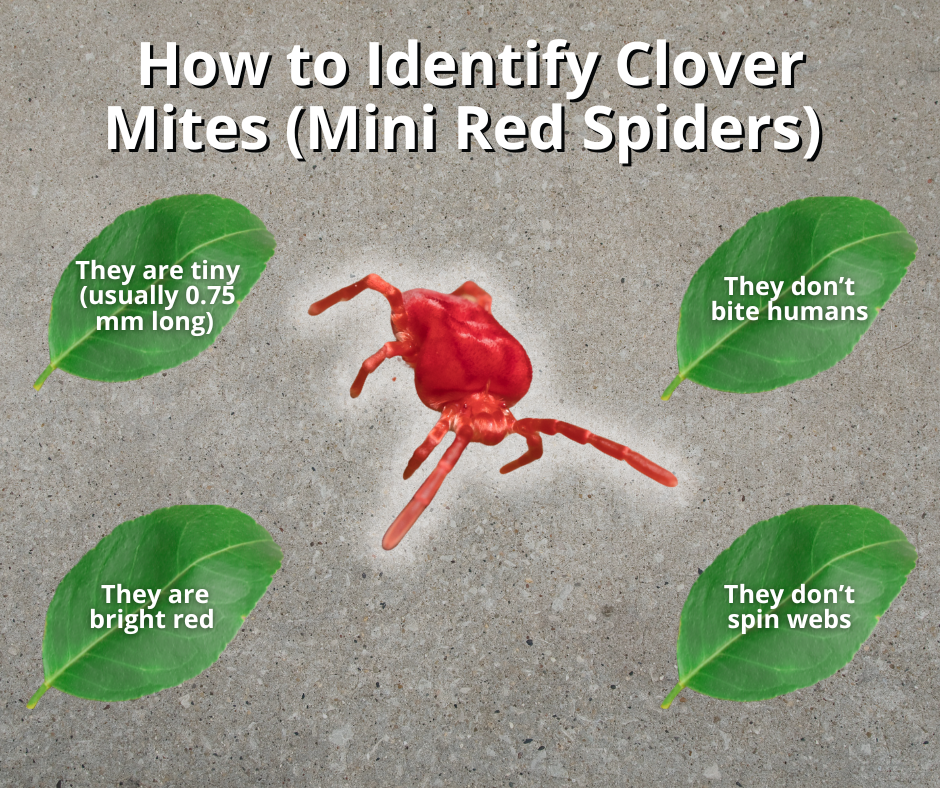
What Are Mini Red Spiders Exactly
Mini red spiders are usually clover mites. These mites are tiny, about the size of a pinhead, and bright red in color. Unlike true spiders, they don’t spin webs or bite people. Instead, they feed on grass, plants, and algae.
You’ll most often find them:
- Crawling on sunny walls and siding
- Gathering around window frames and doors
- Spotted in gardens and lawns near the house
When crushed, clover mites leave behind a reddish stain, which can make them extra frustrating for homeowners.
For more help with pest identification, check out BigFoot Pest Management’s spider control services.
Why Are Mini Red Spiders in My Home
Clover mites typically stay outdoors, but several factors can push them inside:
- Warm or fluctuating weather
These mites flourish when temperatures are mild, especially in spring and fall, but they may retreat indoors when conditions become too hot or too cold. - Lush, fertilized lawns
Overly green, well-fed grass provides ideal feeding grounds for clover mites, which encourages them to move toward your home. - Tiny entry points
Gaps around doors, windows, foundation cracks, vents, and even small weep holes in brick walls provide plenty of access. Their tiny size allows them to squeeze through openings you might not even notice. - Sunlit surfaces
Warm, sun-exposed walls, especially on the south and southwest-facing sides, attract clover mites seeking heat and light. - Overpopulation and food shortages
When their numbers grow too large, or their outdoor food sources dry up, clover mites spread out in search of new feeding grounds and shelter. That’s when they may accidentally end up indoors.
Common hotspots at home:
Clover mites often gather in sunny window sills, along baseboards, on patios, in mulch beds near the foundation, and sometimes even inside basements or wall voids after migration.
Are Mini Red Spiders Harmful
It’s good news, they’re harmless to people and pets:
- No bites, no danger
Clover mites don’t bite, sting, or spread disease. They also don’t damage furniture or structures inside your home. - Annoyance factor
The biggest problem comes when they’re squashed, since their bodies leave behind noticeable red stains on walls, window frames, or surfaces. - Minimal plant impact
Outdoors, they feed on a wide variety of plants but rarely cause serious harm. The most common sign is minor stippling or silvery discoloration on leaves, which usually doesn’t kill the plant.
How to Get Rid of Mini Red Spiders Naturally
Here are homeowner-tested steps that work:
- Vacuum them up
This is the safest and cleanest removal method. Vacuuming avoids the risk of staining that comes with crushing them. Be sure to empty the vacuum bag or container outside afterward. - Seal entry points
Use caulk and weatherstripping on foundation cracks, window frames, vents, and doors. Sealing gaps is one of the most effective prevention methods and can reduce mite entry by more than 60%. - Create a vegetation-free buffer
Leaving an 18–24-inch strip of bare soil, gravel, or mulch around your foundation acts as a physical barrier that can cut mite invasions. - Trim back plants and avoid planting mite favorites
Keep ground cover, shrubs, and grass trimmed back and away from your home’s exterior walls. When landscaping near the house, choose plants that are less attractive to mites. - Cut back on heavy fertilization
Thick, well-fertilized lawns are very appealing to clover mites. Reducing fertilizer use near the edges of your foundation can make your yard less inviting. - Reduce moisture
Clover mites thrive in humid environments. Adjusting sprinklers to avoid overspray near the foundation and improving drainage can reduce mite activity. In some cases, reducing excess moisture has lowered indoor mite counts drastically. - Use natural repellents
Some homeowners have success with non-chemical deterrents like diatomaceous earth, vinegar sprays, or essential oils such as peppermint or clove. These options may help repel mites without introducing harsh chemicals inside your home.
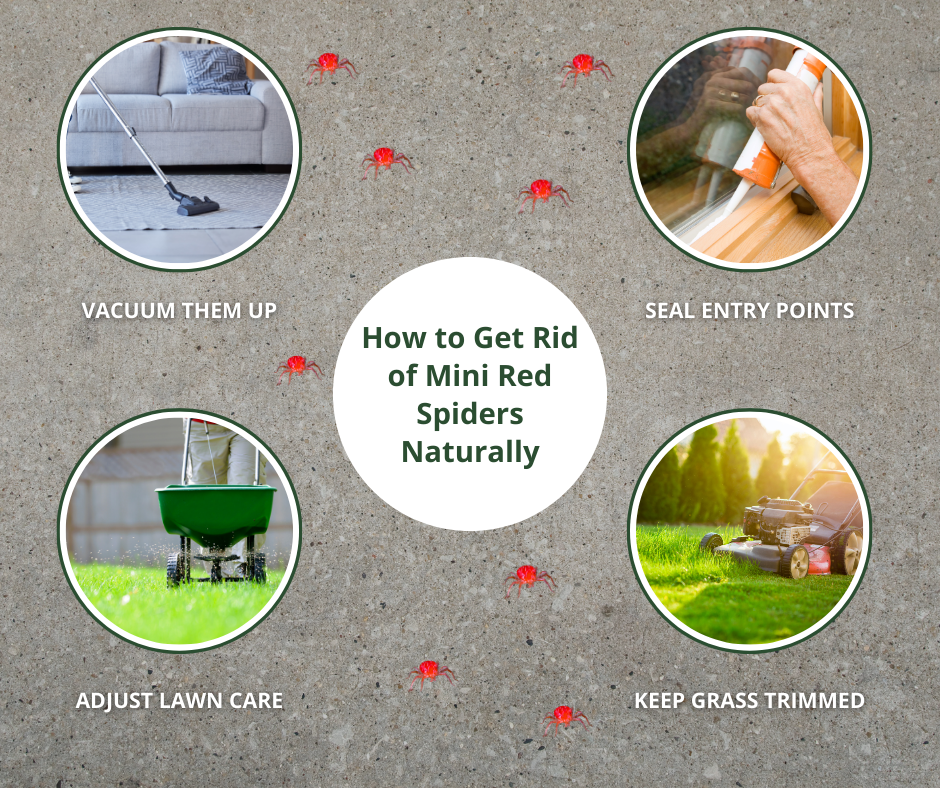
When to Call a Professional Pest Control Service
A few mites here and there aren’t a big problem. But if you’re seeing hundreds of them inside or around your home, it’s time to call for help.
Professional pest control offers:
- Safe treatments that keep mites out long-term
- Inspections to find and seal hidden entry points
- Barrier applications around the foundation
A trained technician can also identify whether you’re dealing with clover mites, spider mites, or another look-alike pest. This ensures you get the right treatment the first time.
Schedule a visit with BigFoot Pest Management’s seasonal pest services.
Related Questions Homeowners Ask
Do mini red spiders bite humans or pets?
No. These spiders are harmless and don’t bite or carry disease.
Will mini red spiders go away on their own?
These spiders may disappear when temperatures change, but infestations often return without prevention.
Are mini red spiders the same as chiggers?
No. Chiggers are outdoor mites that bite humans. Clover mites are only a nuisance that can be controlled.
How do I prevent mini red spiders next spring?
Seal cracks, reduce fertilization near the house, and work with a pest control company for barrier treatments.
Do pest control treatments also handle other seasonal pests?
Yes. Many professional services also target ants, spiders, and other warm-weather invaders.
Conclusion
Mini red spiders, also known as clover mites, may be tiny, but they can become a major nuisance when they gather indoors. They don’t bite or spread disease, but their staining and sheer numbers make them frustrating to deal with.
Simple steps like vacuuming, sealing cracks, and adjusting lawn care can reduce their numbers. But if infestations keep returning, professional help is the most effective solution.
Tired of seeing these spiders around your home? Contact BigFoot Pest Management today for safe, reliable treatments that keep your home pest-free.
What Does a Home Infestation of Fleas Look Like?
An infestation of fleas looks like repeated bites on people or pets, constant scratching, and small dark insects jumping from carpets, furniture, or pet bedding.…
Read MoreWhat Do Carpenter Ants Look Like in Washington Homes?
When homeowners ask what do carpenter ants look like in Washington homes, the answer is simple. Carpenter ants are large black or dark red ants…
Read More



